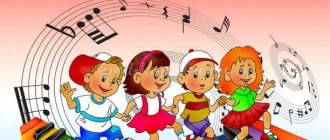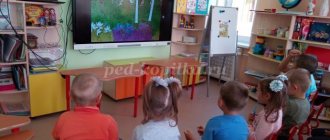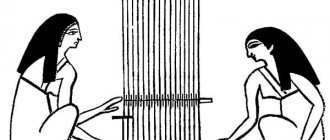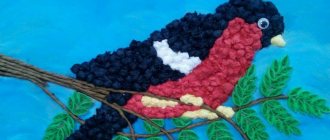The purpose of the didactic game “Living and Nonliving”
The game is aimed at the cognitive development of preschoolers on the topic “Ecology”; it fosters interest and respect for natural objects.
The goal is to expand and consolidate ideas about nature, develop the skill to distinguish between living and inanimate objects, and find connections between them.
Tasks:
- developing the ability to identify objects of living and inanimate nature, as well as man-made ones;
- improving speech skills;
- learning the skill of formulating questions and answering them;
- enrichment of individual thematic vocabulary;
- training in the skills of solving emerging problems and formulating conclusions;
- developing an interest in nature and a desire to positively influence the environment;
- fostering curiosity and cognitive interest;
- development of memory, creative and logical thinking, concentration.
Microorganisms
Microorganisms
Microorganisms can rightfully be considered the first living beings on the planet. They originated long before the appearance of humanity and even animals. This is the longest living form of life.
Microorganisms originated millions of years BC, however, having come such a long way, they are still the most common forms of life. They can be found in every ecosystem. Microorganisms are microscopic single-celled creatures found absolutely everywhere. They cannot be seen with the naked eye, but a microscope is used to study them. Among the wide variety are bacteria, fungi and viruses.
The survival rate of microorganisms is simply colossal - they do not care about almost all environmental conditions. These creatures can be found in hard rocks. The main feature of microorganisms is intensive reproduction in favorable conditions. Genes are transmitted horizontally - they do not need to pass on genetic data to descendants to spread their influence.
Development occurs thanks to other living beings. This factor is decisive in any habitat. Some types of microorganisms survive even in the vacuum of space.
There are dangerous and beneficial microorganisms. Thanks to the latter, life on the planet develops, but the harmful ones only worsen the situation, destroying everything around. Sometimes harmful microorganisms are beneficial - some viruses can cure serious illnesses in people.
Interesting: Nature - what is nature, the nature of the world, photos and videos
Middle group
Before conducting a lexical game, it is necessary to remind students that the answer to the question “Who is this?” indicates a living object, and the question “What is this?” - on an inanimate object. For the game, prepare electronic, if you have a player, or paper images of living and inanimate objects, as well as green round and triangular blue marks.
Scroll through the images on the presentation screen, and preschoolers should say which object they see - living or inanimate, and which of the above questions needs to be answered. For example, seeing a cat on the screen, players say: “Who is that? - Cat". Then they discuss the animal and why it belongs to wildlife. Or an image of a stone appears on the screen. This is inanimate nature, for which the question “What is this?” should be asked.
Abstract for children of senior preschool age “Living and inanimate nature”
Abstract of GCD in the senior group on the topic “Living and inanimate nature”
Target:
To introduce children to the concept of “Living and inanimate nature”, to develop cognitive activity in the process of experimentation;
expand knowledge about the properties of water. Objectives:
- develop curiosity, memory;
— develop active speech skills, enrich active vocabulary; - promote the development of cognitive interests; -expand knowledge about living and inanimate nature, show their interdependence; - learn to quickly find the correct answer to a question; - generalize and clarify previously acquired knowledge about the properties of water; — develop skills in conducting experiments; - expand and activate children's vocabulary; — develop the ability to independently draw conclusions based on practical experience; — cultivate caution when working with water. Methods and materials
: playful, practical, verbal, visual
Individual work
: activate inactive children
Equipment:
- diagram of wildlife; — pictures of living and inanimate nature; - chest; - 3 cups (with water, with soil, empty) for each and spoons according to the number of children; - sponges according to the number of children - saucers according to the number of children.
Progress of the lesson:
—
Educator: Guys, say hello, we have guests today. (Children say hello). The teacher reads a poem: Here on earth is a huge house Under a blue roof The sun, rain and thunder live in it (1 slide) Forest and sea surf, (2 slide) Birds and flowers live in it, (3 slide) The cheerful sound of a stream. You live in that bright house (4 slide) And all your friends. Wherever the roads lead, you will always be there. This house is called the nature of our native Earth (5 slide). Today we will talk about nature - What is nature? (Children's answers) This is correct - flowers, rivers, trees, plants, people, animals, air, water, mountains, stones, stars. – All nature can be divided into two huge worlds: the world of living and inanimate nature. Living nature is everything that grows, breathes, eats, develops. Inanimate nature is everything that does not breathe, does not grow, does not develop. This diagram will help us determine what belongs to living nature and inanimate nature (shows diagram 6 slide). You and I already know how to use diagrams as assistants, with their help we learned poems and composed stories.
Let's look at this diagram. What do you see in the first square? (children's answers)
This is the first sign of living nature - it is growing.
The second sign of all living things is that they breathe, in the diagram this is indicated by small circles as if it were air.
What do you think the cup sign means? (children's answers)
But the arrows mean movement. All living things move.
The next sign of living nature is that all its objects reproduce.
We conclude…..every living thing grows, breathes, eats, moves, multiplies. And the inanimate
Children: Doesn’t grow, doesn’t breathe, doesn’t eat, doesn’t move, doesn’t reproduce Educator: Well done! I’ll check you out, now let’s play the game “Living and Nonliving.”
The teacher explains the rules:
Determine whether the images on the cards belong to living or inanimate nature. You need to place cards with images of inanimate nature on the white field, and cards with images of inanimate nature on the red field.
Children: Lay out the cards on two fields: living objects on the red field, non-living objects on the white field, explaining their action by referring to the diagram.
Educator: Well done, guys, laid out the cards correctly. (children sit on chairs).
Educator: (7th slide) Guys, do you know that living organisms cannot live without inanimate nature. Without water, heat, light, air, more than one living organism cannot survive, and that means you and me. Therefore, we can say that living and inanimate nature live side by side, they help each other, they are friends. They are interconnected.
The recording sounds alternately - birdsong - the sound of the wind - the sound of rain
Educator: Who is this, (What is this)
Children: Birds, wind, rain
Educator: This is living or inanimate nature
Children: - the sound of the wind - inanimate nature
- birdsong - wildlife
-rain - inanimate nature Educator: Guys, what does rain consist of?
Children: Water Educator: That's right, rain is water. Today we will continue to explore the waters. Let's remember what properties of water we already know. And our collage will help us with this.
Children: Water is transparent, colorless, has no shape, tasteless, etc. Educator: And today we will learn another property of water by conducting experiments. Everyone, sit down in our laboratory.
Children: Sit down Teacher: Let's remember the rules of behavior when conducting an experiment? Children: Do not make sudden movements. To talk loudly. Proceed strictly according to the instructions. Don't disturb each other. Educator: Correct
Experiments: 1 “Where did the water hide?” The water was absorbed into the sponge.
2 “Water and Earth” Water penetrated into the earth
3 “Water purification” Water seeped through the gauze and cleared of debris
4 “Blooming Flower” The water was absorbed into the paper and the paper straightened out
5 “Magic chest” Educator: So we learned about another property of water. And what Children: Water penetrates, seeps.
Educator: You guys worked very well today, together, and I want to treat you to juice.
What is juice?
D: it's liquid
Q: You are right, juice is a liquid, just like water. Help yourself, how do you feel?
D: it will also seep into us. You can feel the juice seeping through. We drink, and the juice penetrates us. So glad. And it was a pleasure to explore with you today. You were very careful when performing the experiments. What did you like today?
Children: Share their impressions of the lesson. They say that they learned something new. Educator: let's ask our guests, what did they learn new today?
Let's say goodbye to our guests, get dressed and go outside - breathe fresh air!
Senior group
For the game, intended for preschoolers 5–6 years old, you need landscape-size cards and small images of natural objects. The cards should display the questions “Alive?” and “Inanimate?”, “Who?” So what?". The didactic game “Living and Inanimate Nature” teaches you to ask questions in detail and competently, and to give a clear and correct answer. At older preschool age, the child should already be able to talk in sufficient detail about what he saw and describe the images. The game helps you gain the skill of composing a narrative according to a plan.
For one lesson, take as many images as will not tire your preschooler. Show pictures one by one and ask what is shown on them. The player’s task is to answer the above questions, point with a finger at the correct answer, tell about the depicted object, what it looks like, what it does. The game can be made competitive if several children participate, then each player receives a badge for correct answers.
Here are examples of questions from the teacher and the player’s answers:
- "Who is this?" - “Dog” - “Is she alive?” - “Live” - “What is the dog doing?” - “Barks, runs, bites, wags its tail, sniffs, plays”;
- "What is this?" - “Tree” - “Is it alive?” - “Living” - “What does a tree do?” - “It grows, blooms, rustles its branches, bends in the wind”;
- "What is this?" - “Stone” - “Is he alive?” - “Not alive” - “What does a stone do?” - “Lying.”
Natural phenomena
Metamorphoses are also called natural phenomena (what is this?). For example, in the spring leaves grow on trees, and in the fall they fall off. After the rain, a rainbow appears in the sky and mushrooms grow. In winter it snows, together with the wind forming a blizzard or blizzard.
All this and much more are natural phenomena, the totality of which is divided into classes :
- by origin (climatic, cosmic, geological, biogeochemical, geomorphological) - tsunamis, hurricanes, earthquakes, precipitation, lightning, solar and lunar eclipses, etc.;
- by duration (instant, short-term, long-term) - volcanic eruption, icicles, drying out of a river bed, etc.;
- by regularity of action (daily and seasonal) - sunrise, bud opening;
- by scale of distribution;
- by the nature of the impact (favorable, unfavorable). For example, natural disasters can be very destructive - floods, tornadoes, etc.
Preparatory group
The game teaches you to distinguish between natural objects and objects created by human hands. Preschoolers gain the skills of classification, description, reasoning, and drawing conclusions. The game can be individual based on the “teacher and child” principle or group.
It is necessary to prepare images of natural and man-made objects. Place pictures of man-made objects in front of the children. Show images of natural objects one by one, and students must find among man-made objects those that are similar in purpose or appearance. For example, after seeing a picture of a beehive, children can choose a picture of a human house, a chicken coop, or a barn.
Here are more examples of similar natural and man-made objects for play:
- cobweb - mesh, lattice, gauze, napkin with lace;
- flying bird - airplane;
- sun - lamp, lantern, spotlight;
- field mouse - computer mouse;
- den - bedroom, kennel;
- wind - fan, hairdryer;
- insect butterfly - bow tie;
- hedgehog - brush, comb;
- crustacean claws - pliers, pliers;
- bell plant - musical instrument bell;
- giraffe - crane;
- fish - submarine;
- caterpillar - train;
- dragonfly - helicopter.
It is important that the child not only select objects that are similar in certain characteristics, but also explain in detail how they are similar and why he made this particular choice. For example, a hedgehog has densely arranged needles on its back, similar to teeth protruding from a comb.
Nature is...
The word “nature” belongs to the Old Russian language and consists of two parts - the prefix “pri” and the root “genus”.
In ancient Russian mythology, a deity named Rod is mentioned, who personified the unity of people belonging to the same clan. It was this god who created such words as birth, childbirth, woman in labor, newborn, etc.
Also, nature in colloquial language often means natural habitat. For example: birds living in natural conditions live longer than their relatives tamed by humans.
Children begin to study nature (find out what it is) in the elementary grades of school during the lesson “The World Around us.” A synonym for the term “nature” is the word “ nature ”.
It follows that nature is everything that exists on its own, in a natural way, which has not been touched by the hand of man. This is the external, material world, in front of which a person is powerless, but can still influence it.
For example, people are unable to control rainfall, earthquakes, wind, etc. But they can easily plant trees, creating entire parks, or, conversely, destroy an entire forest.
To simplify the definition completely, nature is the natural shell of the earth (what is also called the biosphere), which includes:
- bodies of water (oceans, seas, lakes, rivers);
- vegetation (flora);
- fauna (fauna);
- mountains, rocks, caves, sand, earth, deserts;
- weather and climate.
By the way, man himself is also part of nature. But what he invented and created is no longer there.
For example, a house built of wood is not a natural object, although it consists of natural material.
The study of the natural world is carried out by many sciences, which are called natural: physics, chemistry, astronomy, biology and others.
Properties of inanimate nature
The emergence of inanimate nature served as an impetus for the development of life on Earth. All objects can be considered primary. The following properties are attributed to inanimate nature:
- They are in one of three states of aggregation. There is also a fourth one - plasma, but it is a separate element for thought. Solid objects do not change their original shape; their molecules are tightly packed together.
- They are strong and dense: soil, rocks and mountains, sand, ice.
- The liquid state is changeable, molecules float, being in an indeterminate form: mists, liquids, mercury. Gaseous objects: steam and air. The molecules are not connected by anything and are in free flight.
- Representatives of inanimate nature do not change; they are not able to breathe, think, or reproduce.
- Changing sizes and shapes is possible only under the influence of external factors. Water exists in three states of aggregation: steam, liquid and ice. Ice crystals gradually grow, stones are worn down due to wind and water.
- They cannot die or be born. They cannot move independently; everything happens under the influence of the external environment.
Interesting: Why are the clouds white and the clouds gray?
Lithosphere
Lithosphere
Planet Earth itself is considered an inanimate object. However, it is the only planet studied so far on which life exists in the form in which we see it. The planet arose billions of years ago thanks to a fortunate coincidence; its current position in the solar system ensures the comfortable existence of organisms on its territory.
The structure of the earth is not only its outer shell. In the very center there is a core filled with red-hot metal compounds. On top of the core is the molten mantle, its layer is extremely thick, much larger than the soil layer. Evolutionary processes affected not only living nature, continents constantly changed their position, mountains and oceans arose.
Interesting: Why is the Moon sometimes visible during the day and sometimes not?
At the moment, there are 6 continents, but long before the advent of humanity there was only one continent. The relief on each part of the planet is different, as are the climatic conditions. Each zone has its own characteristic features; it is home to certain species that are unique to it.
In addition, there is wealth in the depths of the Earth. Minerals make human life much easier, extending its duration and developing cities, countries and settlements.





